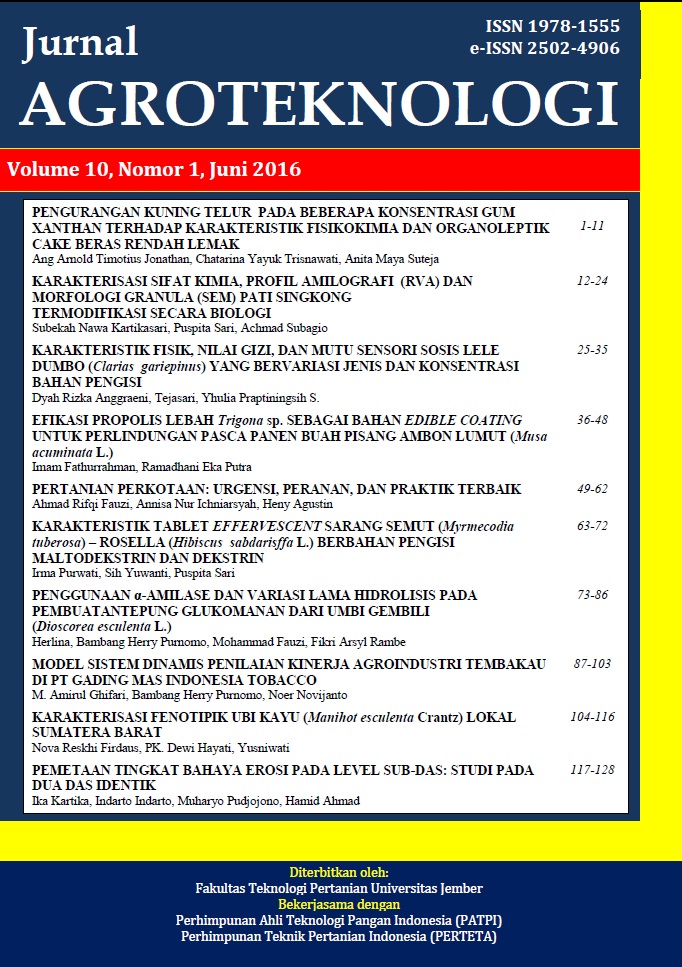PEMETAAN TINGKAT BAHAYA EROSI PADA LEVEL SUB-DAS: STUDI PADA DUA DAS IDENTIK
DOI:
https://doi.org/10.19184/j-agt.v10i01.4332Abstract
This research deals with the prediction of erosion level by means of USLE and GIS software. USLE was used to calculate the erosion level at the watershed level, then the result was classified and mapped on the top of ArcGIS. Two similar sub-watersheds (Kloposawit and Rawatamtu) in the
eastern part of East Java were used for this study. Input data consist of: (1) ASTER GDEM2 (resolution pixel ± 30m), (2) soil map layer, (3) land uses map, (4) rainfall data, and (5) ground control points. Research procedures include (1) data inventory, (2) analysis using excel and ArcGIS,
(3) calculation of erosion level, (4) field survey using GPS, and (5) interpretation. The research result shows that about 56,4 km2 (7,8%) area of Kloposawit sub-watersheds is classified as high and very high erosion level rate. This area cover 8 districts at Bondowoso Regency. Furthermore, at Rawatamtu sub-watershed, high and very high erosion level cover 7 districts in Jember Regency.
Keywords: erosion rate, USLE, erosion map, watershed
Downloads
Downloads
Published
Issue
Section
License
Jurnal Agroteknologi has CC-BY-SA or an equivalent license as the optimal license for the publication, distribution, use, and reuse of scholarly work. Authors who publish with this journal retain copyright and grant the journal the right of first publication with the work simultaneously licensed under a Creative Commons Attribution-ShareAlike 4.0 International License that allows others to share the work with an acknowledgment of the work's authorship and initial publication in this journal.
 JURNAL AGROTEKNOLOGI
JURNAL AGROTEKNOLOGI 








.png)
